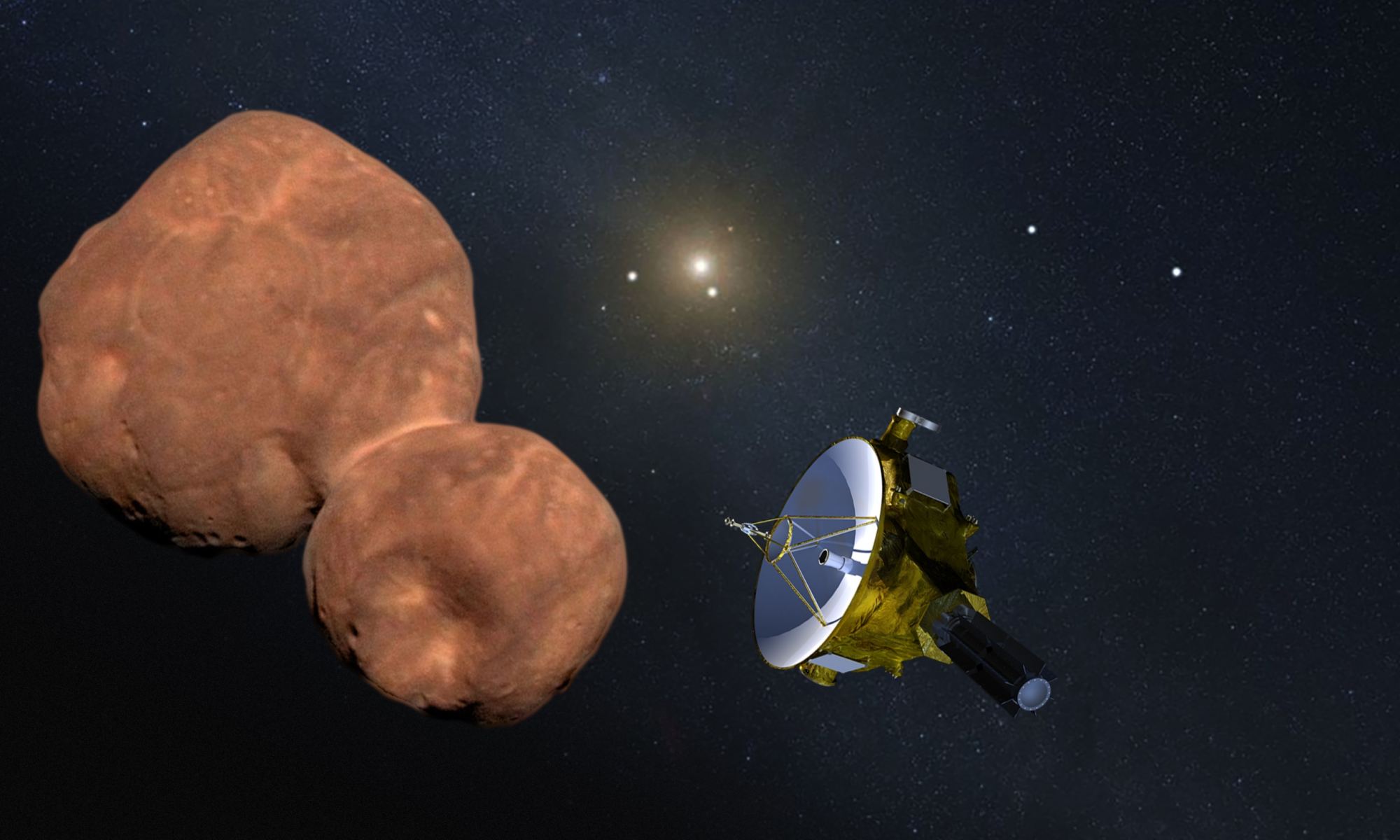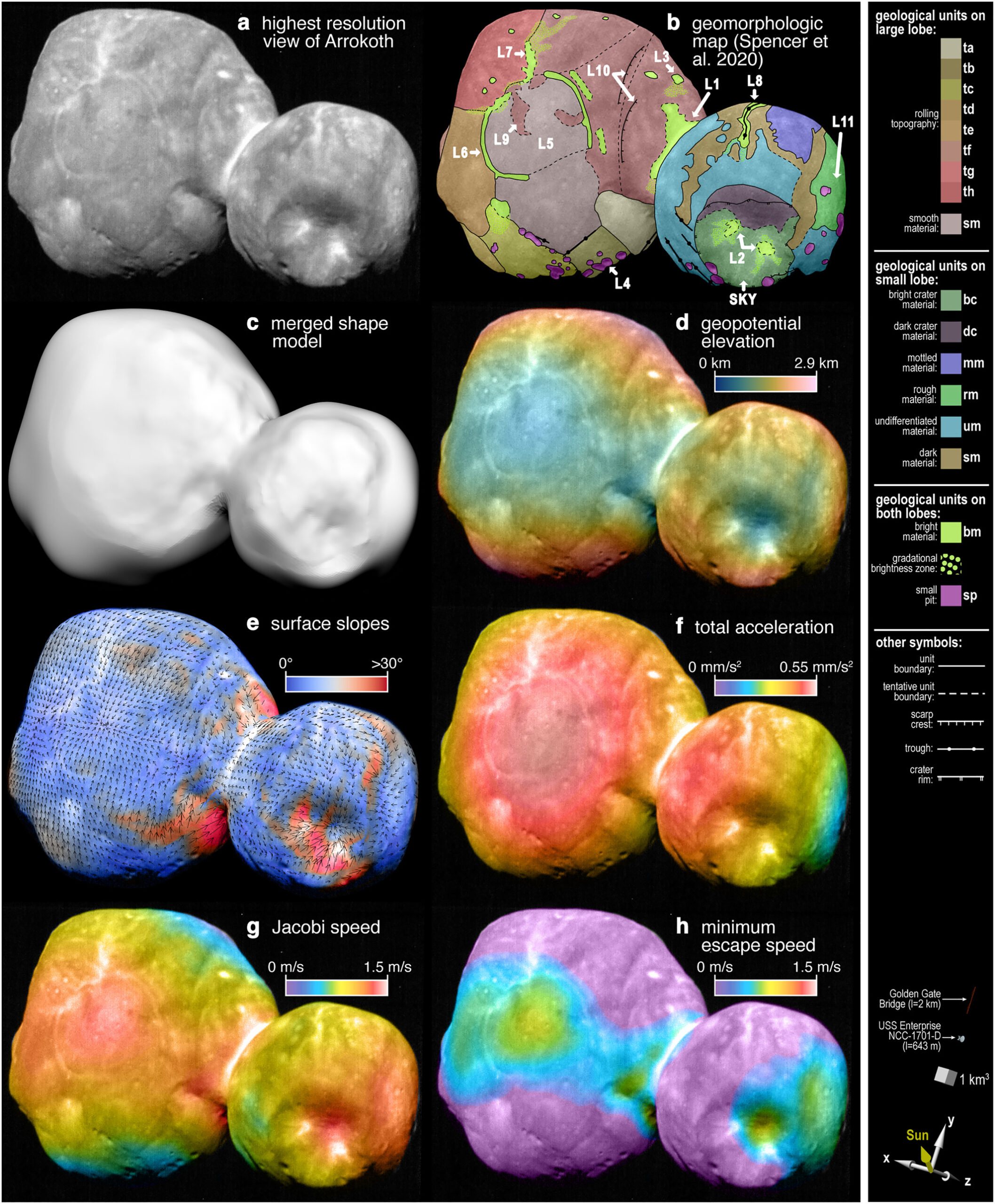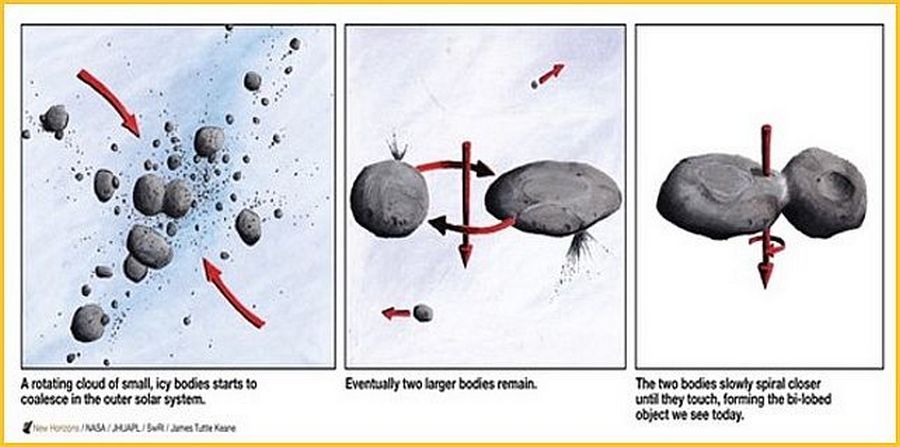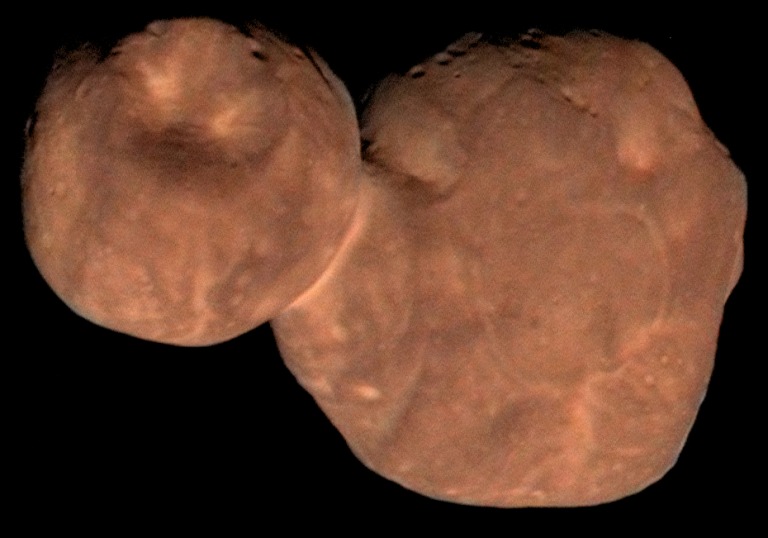The strange shape of the trans-Neptunian Arrokoth object in the Kuiper Belt arouses both curiosity and questions among scientists. These unusual structures may hide important information about the origin of this remote object and, possibly, about our Solar System.

Arrokoth is the most distant object that has ever been studied up close. It is located in the Kuiper Belt, far beyond even Pluto. This object attracts attention with its two-lobed shape, reddish hue and irregularities on its surface. These irregularities may be traces of large boulders that once merged together to form an Arrokoth.
In 2019, the New Horizons spacecraft flew past Arrokoth at a distance of 44.6 astronomical units from the Sun, providing scientists with a unique opportunity to study this object. Under the guidance of planetary scientist Alan Stern from the Southwest Research Institute, a team of scientists carefully analyzed the data and found 12 irregularities on the surface of the Arrokoth. These irregularities have a similar size, shape, color and albedo, which may indicate their common origin.

“It’s amazing to see this object so well preserved. Arrokoth almost looks like a raspberry, made of little sub-units. Its shape directly reveals these details of its assembly from a set of building blocks all very similar to one another,” says astronomer Will Grundy of the Lowell Observatory.
Arrokoth is like a time capsule
Arrokoth, located so far from the Sun that it is a kind of “time capsule”, therefore, may be an important key to understanding the evolution of planets in our Solar System. This object may be the remaining planetesimal that has never grown into a full-fledged planet. Due to its position, it is practically not exposed to solar radiation and is therefore the most natural and unchanged object among those that we have ever studied.

Previous studies of the Arrokoth indicated that it once consisted of two smaller objects that gradually merged together. However, recent discoveries suggest that this story is much more complicated. Scientists believed that it was a bunch of objects that were in a complex orbital dance and gently merged under the influence of gravity at low speeds, forming a larger object. This suggests that the formation of planets could have started from a bunch of smaller objects coming together.
Arrokoth Features
Arrokoth has impressive dimensions: 35 kilometers long, 20 kilometers wide and 10 kilometers thick. It consists of two large parts. The big one was named Wenu, and the smaller one was named Weeyo.

Using close-up images obtained by New Horizons, scientists could identify 12 mound-like structures on Wenu. To explain their origin, the researchers conducted a simulation, considering two possible scenarios. The first involved the collision of smaller objects at high speed, which would lead to a smooth surface. The second scenario assumed a soft adhesion of larger objects at low speed, which would lead to the formation of a lumpy surface. The researchers believe that the second scenario is more likely.

Such discoveries confirm the idea that planetesimals can form from smaller objects that gradually merge. This new understanding of the formation of Arrokoth-like objects may help scientists view other objects in the Solar System from a new perspective.
Now NASA’s Lucy mission is exploring populations of asteroids moving in the orbits of Jupiter. Scientists hope that the search for Arrokoth-like structures among these objects will help them better understand the formation processes in the Solar System.
Earlier we reported on New Horizons discoveries at the edge of the Solar System.
According to universetoday
Follow us on Twitter to get the most interesting space news in time
https://twitter.com/ust_magazine
